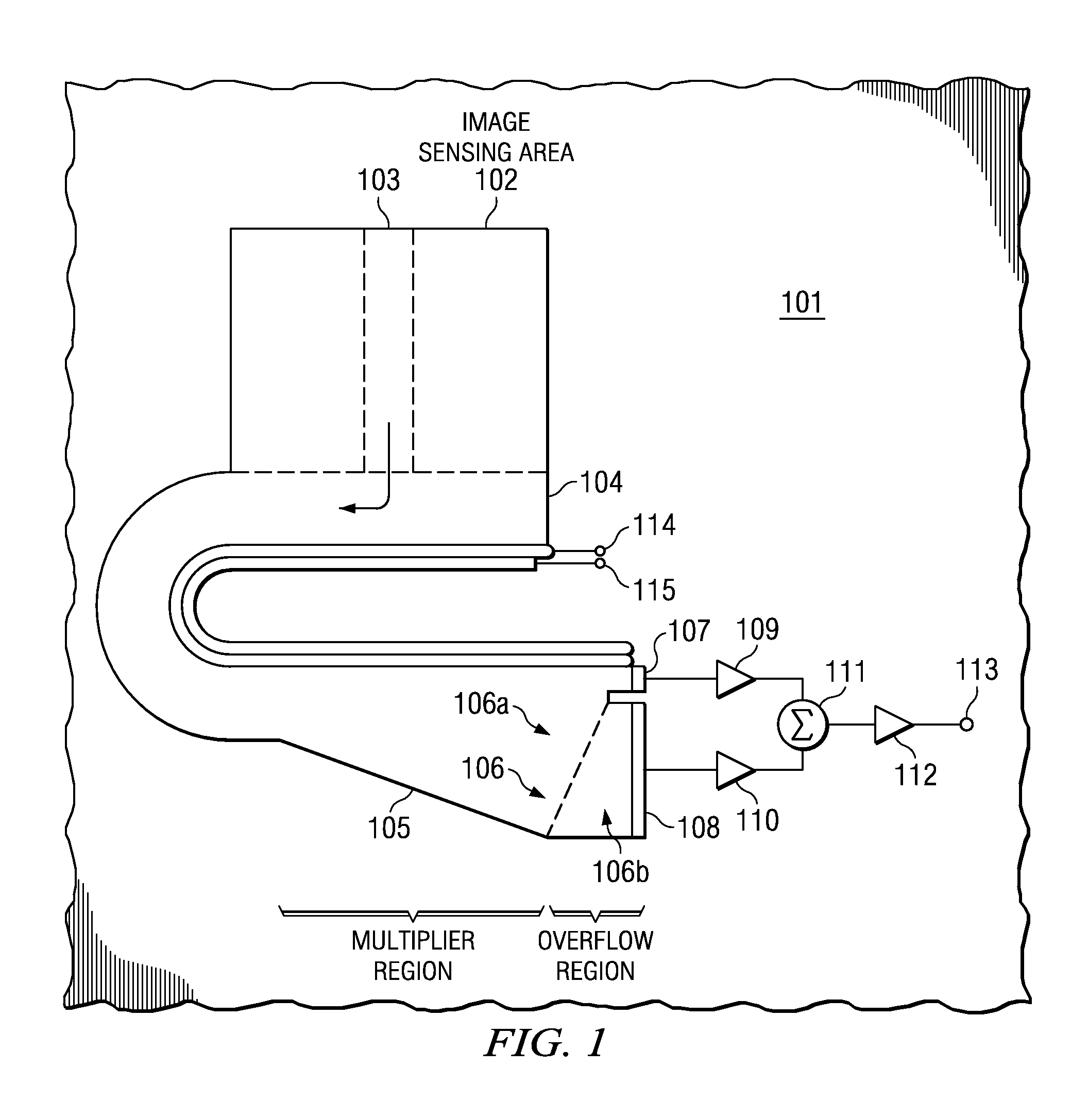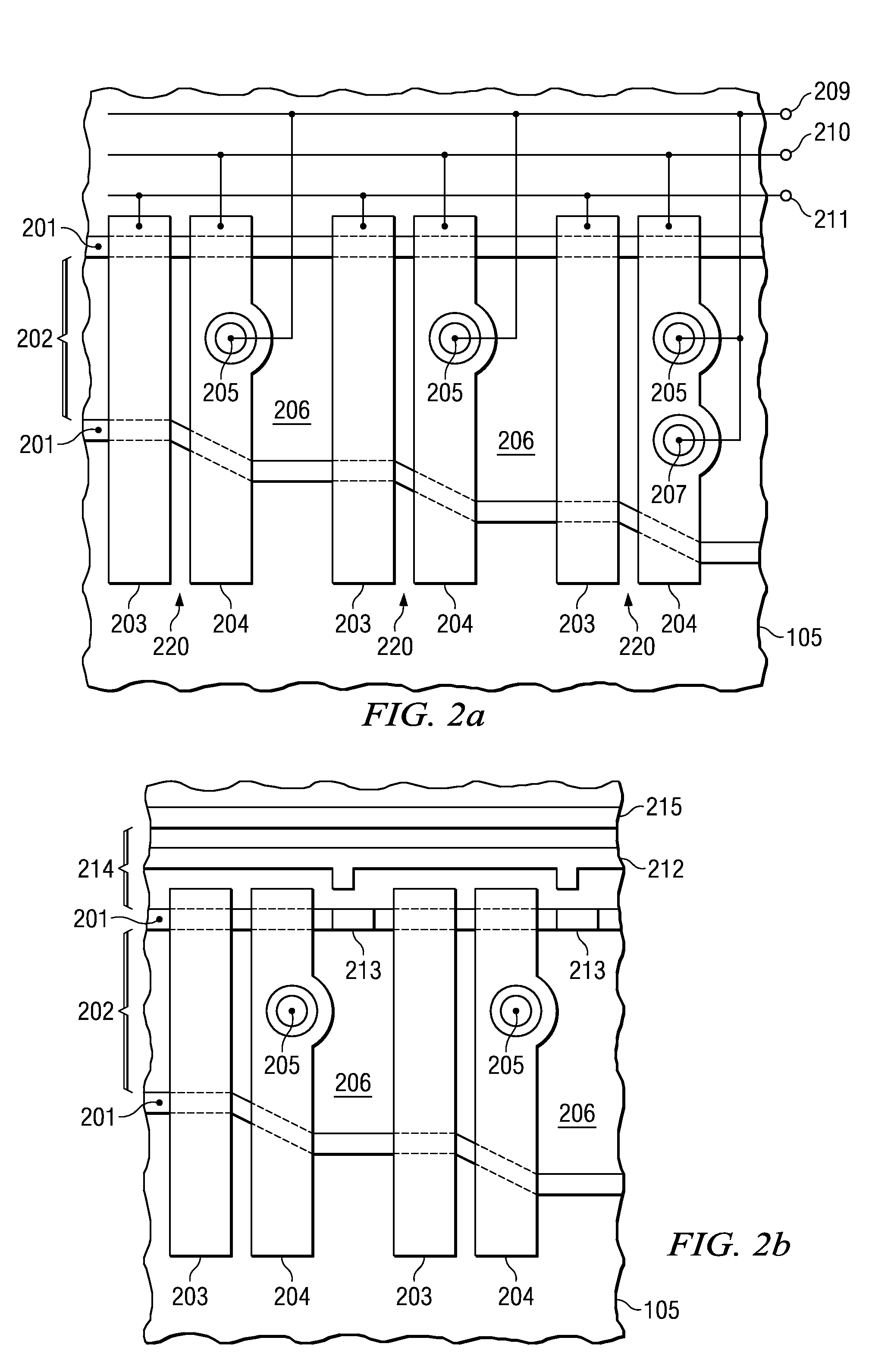High dynamic range charge readout system
a charge readout and high dynamic range technology, applied in the field of solid state image sensors, can solve the problems of impact ionization, noise floor of the present day charge conversion amplifier is approximately 10 electrons, and cannot be easily reduced, and achieve the effect of high dr, low noise floor, and low pulse amplitud
- Summary
- Abstract
- Description
- Claims
- Application Information
AI Technical Summary
Benefits of technology
Problems solved by technology
Method used
Image
Examples
Embodiment Construction
[0016]In FIG. 1, a plan view of a typical CCD area image sensor architecture is shown. The semiconductor substrate is indicated as the region 101 where the active areas of the sensor are enumerated. The region 102 is the active image sensing area that is divided into individual pixels by channel stops and transfer gates. Both the channel stops and the gates are not shown to simplify the drawing.
[0017]There are many types of image sensor architectures ranging from Frame Transfer to Interline Transfer with single horizontal register or multiple registers that can be used here. However, these options will not be discussed here any further to simplify the description. It is clear to those skilled in the art that the present invention can apply to all of them.
[0018]The region 103 in FIG. 1 represents one vertical column of pixels that interfaces with the horizontal register 104. When the image area gates are clocked, the charge from one row of pixels is transferred into the horizontal re...
PUM
 Login to View More
Login to View More Abstract
Description
Claims
Application Information
 Login to View More
Login to View More - R&D
- Intellectual Property
- Life Sciences
- Materials
- Tech Scout
- Unparalleled Data Quality
- Higher Quality Content
- 60% Fewer Hallucinations
Browse by: Latest US Patents, China's latest patents, Technical Efficacy Thesaurus, Application Domain, Technology Topic, Popular Technical Reports.
© 2025 PatSnap. All rights reserved.Legal|Privacy policy|Modern Slavery Act Transparency Statement|Sitemap|About US| Contact US: help@patsnap.com



